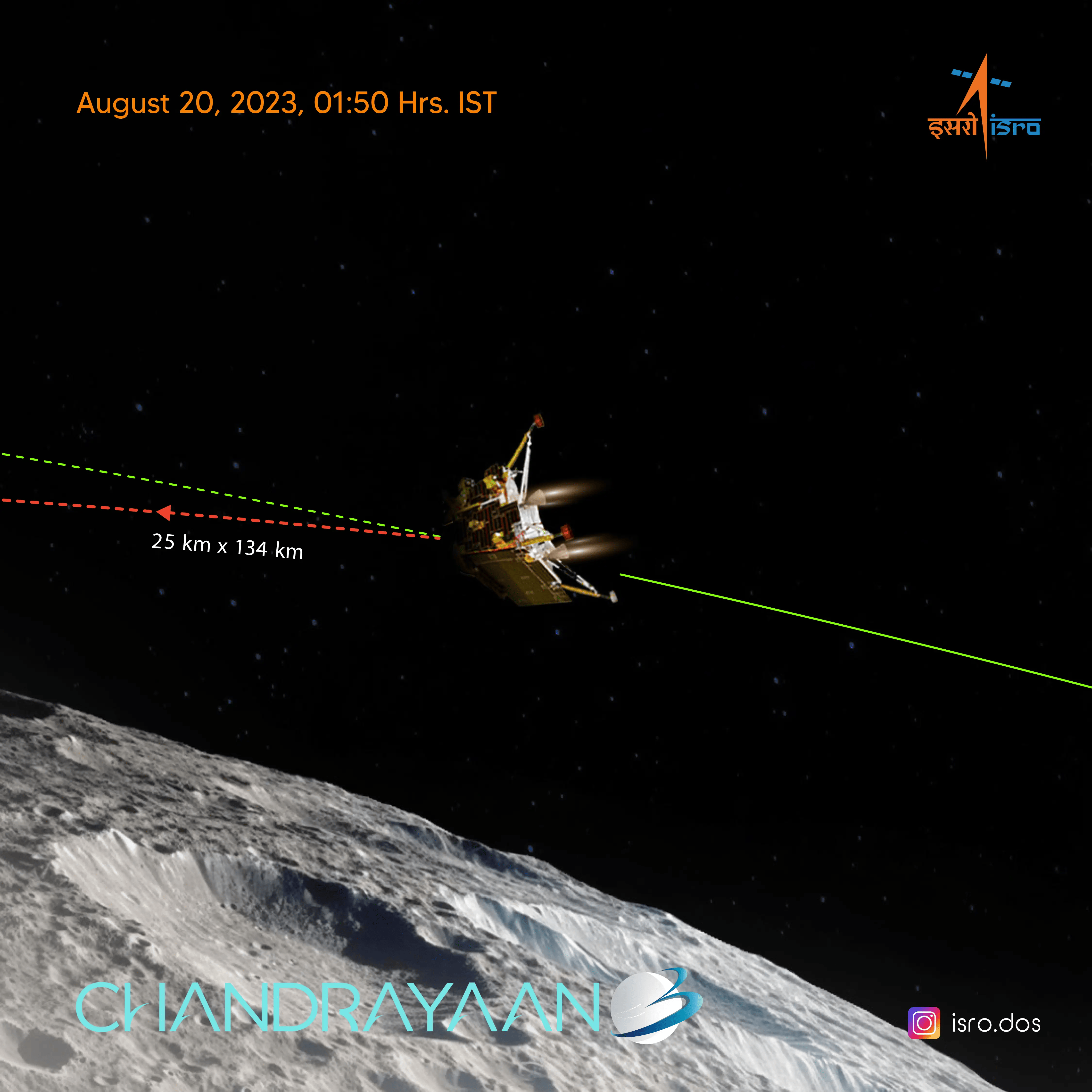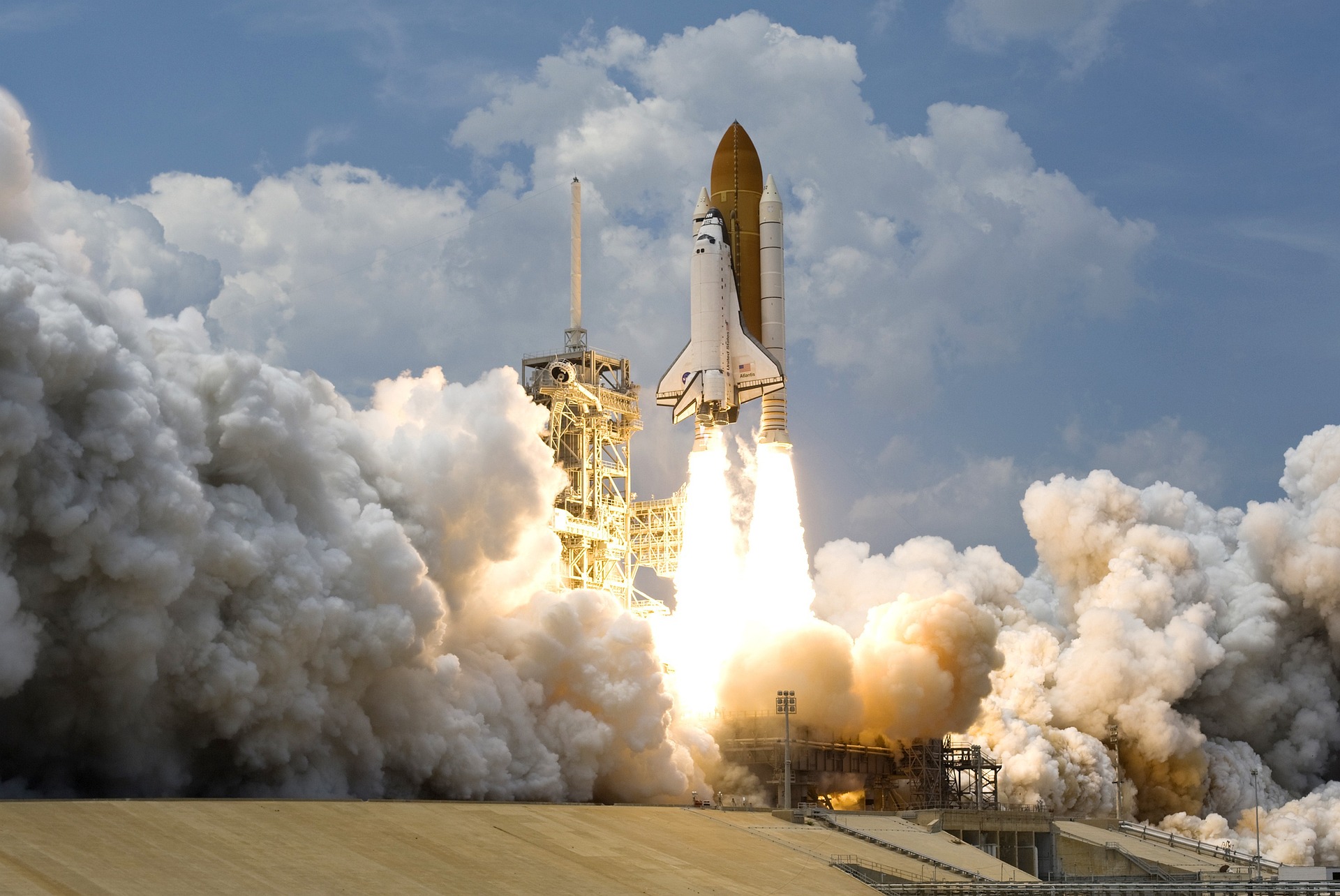India has created history by becoming the first country to land ISRO’s Chandrayaan 3 spacecraft on the moon’s south polar region. The spacecraft made a successful soft landing on 23 August 2023. The rover came out of the lander and is now exploring the lunar surface.

Image credits: ISRO
Chandrayaan 3 – The Moon Mission
Chandrayaan 3 is the third moon mission by the Indian Space Research Organisation (ISRO). It is a follow-on mission to Chandrayaan 2 as in 2019, Chandrayaan 2’s Vikram lander crashed and couldn’t make it to the moon’s surface due to technical failure. After learning from their mistakes and the crash landing, ISRO scientists modified the systems in the Chandrayaan 3 to make it successful. Thus, this third moon mission is India’s second attempt to land on the moon.
Chandrayaan 3 consists of an endemic Lander module (LM), a Propulsion module (PM) and a Rover. The lander is named Vikram, and the rover is called Pragyan. Both the lander and rover contain scientific payloads to carry out chemical analysis and other experiments on the lunar surface.
The mission started on 14 July 2023. The spacecraft was launched from the Satish Dhawan Space Centre in Shriharikota Range (SDSC SHAR), India, using an LVM3 (Launch Vehicle Mark-III) M4 launcher. It is a three-stage medium-lift launch vehicle developed by ISRO. On 5 August 2023, Chandrayaan 3 successfully entered into lunar orbit and finally, on 23 August 2023, the spacecraft softly landed on the moon’s south polar region.
Mission’s Objectives
According to ISRO, the mission’s three main objectives were to perform a safe and soft landing on the moon, explore the lunar surface and conduct in-situ experiments for collecting crucial scientific data. To accomplish these objectives, scientists focused on thrust control, trajectory adjustments and rotation speed of the spacecraft for successful landing. By doing so, the lander was able to land near the moon’s south pole at 70 degrees latitude.

Image credits: ISRO
However, Chandrayaan 3’s primary target was the moon’s southern pole. During the previous moon missions, spacecraft have landed on the moon’s equator as it is the safest and easiest place. Also, the temperature here is high, and the presence of sunlight offers a regular supply of energy to the solar instruments of the spacecraft making them perform desired operations. But the polar regions of the moon are different. There is darkness, low temperature, no sunlight, and large craters are present making it difficult for instruments to perform experiments. Due to this reason, the moon’s polar regions have remained unexplored.
As the Vikram lander has landed and the rover has made its first move, the scientists will explore the lunar south pole’s diversity to see if life is possible on the moon. Chandrayaan 1 mission hinted at the presence of water molecules below the moon’s crust which made scientists believe that there may be water-ice reserves beneath the lunar surface. As the moon’s polar regions are dark and have unique geography and topography, scientists will perform experiments to confirm the availability of water molecules in the form of ice on the moon.
Another reason why Chandrayaan 3 has chosen the moon’s south pole as its landing site is the availability of ice that can be used for future crewed missions. The spacecraft will perform experiments on the water-ice reserves and explore how these reserves could be used to extract fuel, oxygen and water for future crewed moon missions. Overall, the lunar south pole was chosen as the landing site to unlock its cosmic mysteries and scientific secrets.
Other nation’s efforts for moon mission
India has become the 4th country to land a spacecraft on the moon. With the successful Chandrayaan 3 mission, India has joined the elite group of three countries that have sent their spacecraft to the lunar surface. These countries are the United States, China and the erstwhile Soviet Union. Before India, these countries were able to accomplish soft landings on the moon and gather rock and soil samples for testing.

Image credits: Pixabay
Recently, Russia launched its first moon mission called Luna 25 on 10 August 2023. The mission aimed to send the lander to the moon’s south polar region. Unfortunately, the mission became a complete disappointment to the country. On 20 August 2023, the spacecraft went out of control and crashed into the lunar surface. Roscosmos, the Russian Space Agency, stated that it would investigate the reason behind the failure of Luna 25 and work on its technologies to make the country’s next moon mission successful.
Other countries and space organisations are also working on launching their moon mission in this or upcoming years. SpaceX is planning to take Japanese billionaire Yusaku Maezawa and eight other people to the moon voyage under the dearMoon project in late 2023. On the other hand, NASA plans to launch its next moon mission called Artemis II in 2024. This mission aims to take astronauts to the moon’s orbit. NASA will also launch Artemis III in 2025 or 2026 which aims to take the first woman and first person of colour (non-white) on the lunar surface. China has also announced its plans with Russia to establish a joint base on the moon by 2035. As water-ice reserves are detected on the moon’s south polar region, all countries and their space organisations are rushing to get back to the moon to proclaim the availability of water there.
If you enjoyed reading our articles, please consider supporting us by buying our geeky merchandise on Instagram.



1 comment
[…] Luckily, one of the payloads aboard Odysseus was NASA’s NDL system. This system had the same capabilities as the failed lasers. Engineers at Intuitive Machine’s command center in Houston bought time by sending Odysseus on an extra 2-hour orbit around the moon. They were thus able to send a workaround protocol to the Nova-C lander to complete its landing near the moon’s south pole. […]